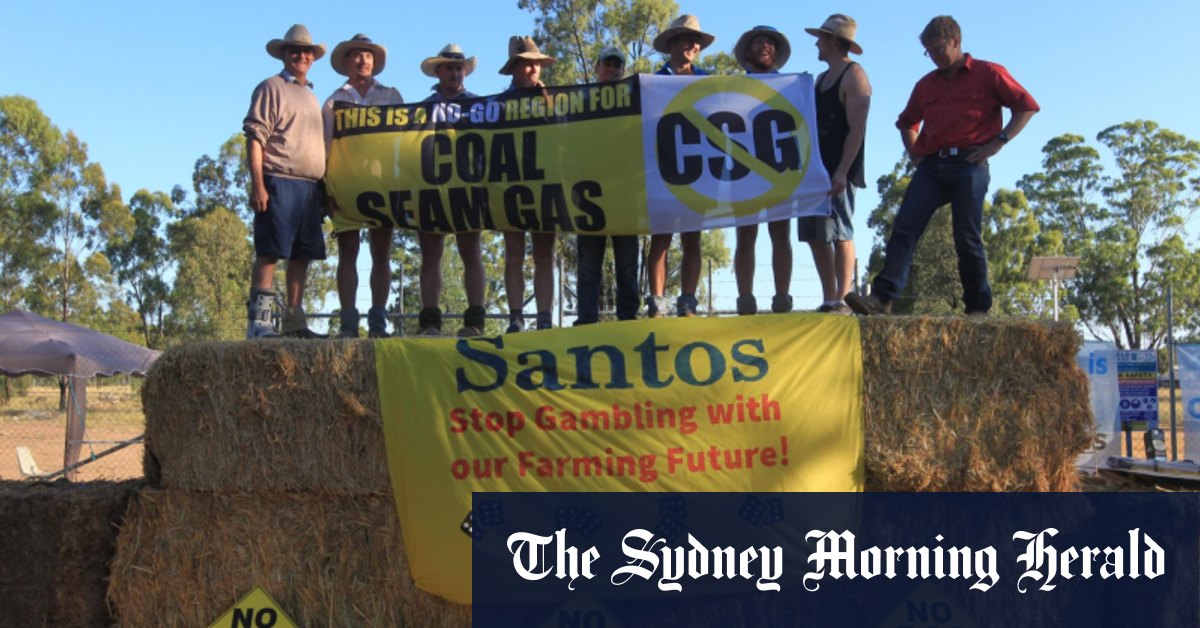Narrabri gas field remains a huge risk

The political battle over Santos’ proposal to develop its Narrabri gas field has gone on for almost a decade and despite a long-awaited decision by the NSW Independent Planning Commission this week the battle looks likely to continue for some time.
Many were looking to the IPC to settle the question of whether the jobs and tax revenue generated by the project were enough to compensate for the damage the project would cause to the environment, including its projected impact on global warming.
In fact, while the IPC on Wednesday approved the project it has come with so many conditions that it remains far from certain that it will stack up technically and economically.
NSW has tried to pursue a middle path to the development of coal seam gas. While Victoria has effectively banned it and Queensland granted rapid approvals, the NSW Coalition government kept gas fields away from residential and sensitive agricultural areas but allows it elsewhere with rigorous conditions.
Over the past decade gas projects on the North Coast and near Gloucester have been abandoned leaving Narrabri, on which Santos says it has spent $1.5 billion, as the last serious candidate.
The IPC was under political pressure to green light this project from the Morrison government, which has put the project at the heart of its plans for a “gas-fuelled” recovery. It says when Narrabri is developed, it will supply enough gas to meet half of NSW’s needs and power a boom in energy-intensive manufacturing.
The IPC was created to increase public confidence in the impartiality of planning approvals, which had been shaken by revelations of political interference.
To its credit, the IPC appears to have taken seriously its responsibility to ensure Narrabri meets the highest standards. Santos’s share price fell after the announcement of the IPC decision as investors realised how expensive it will be to comply with the conditions of the approval.
Before it even starts digging, Santos must produce better modelling of the impact on groundwater of pumping out coal seams in the already drought-prone region. Many farming groups have objected to the project because if the water table falls, it could cost a lot more farming jobs than it generates in manufacturing.
The NSW state government must rigorously monitor Santos’s performance against all the benchmarks set by the IPC and make sure it sticks to all its obligations, including those on controlling fugitive greenhouse gas emissions from extracting and transporting gas.
Santos won approval by arguing that gas should be considered a transition fuel, which was consistent with NSW commitment to the Paris treaty on climate change because it produced less greenhouse gas than coal. If more gas than expected escapes from the pipes and the mines, this might not be true.
There is still also a huge question over whether gas has a long-term role to play in Australia’s energy transition. Given the high cost of developing the field, the falling cost of renewables and storage, and the global glut of gas as a result of the COVID-19 recession, the Narrabri field is a high-risk investment.
The federal government’s failure to put in place a long-term climate and energy policy adds a whole new level of uncertainty. Analysts say the field cannot deliver gas for 2025 whereas the federal government refuses to name an emissions reduction target beyond 2030.
The Herald argues that in the next decade Australia will have to impose much tighter controls, such as a carbon tax, on greenhouse gas emissions, including from gas. There is no case to put even one cent of taxpayer money into this project. It is up to Santos to decide whether it wants to take the risk.
Note from the Editor
The Herald editor Lisa Davies writes a weekly newsletter exclusively for subscribers. To have it delivered to your inbox, please sign up here.
Since the Herald was first published in 1831, the editorial team has believed it important to express a considered view on the issues of the day for readers, always putting the public interest first. Elsewhere, we strive to cover a diversity of views without endorsing any of them.
Most Viewed in Business
Source: Thanks smh.com